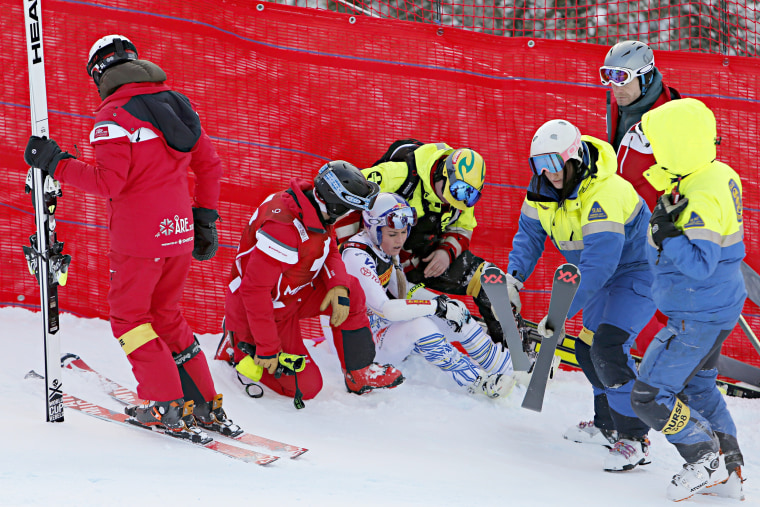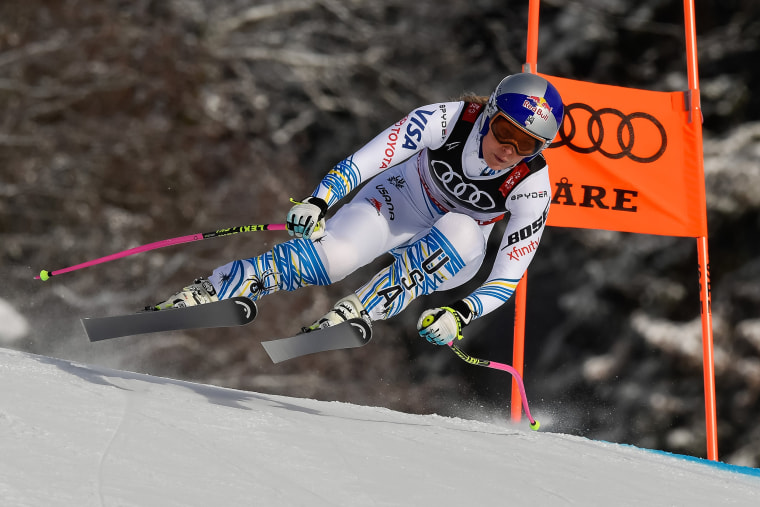At the beginning of February, American skier Lindsey Vonn officially retired, citing the slew of injuries that continue to take a toll on her body. But Vonn’s accomplishments will forever speak for themselves: four World Cup titles, three Olympic medals, including one gold, and 82 wins in FIS World Cup events, just four shy of the all-time record. With a career characterized by sheer tenacity and improbable comebacks, Vonn is considered by many to be the greatest women’s skier of all time — and the greatest U.S. skier of either gender — and her impact on the American skiing program will be felt for generations to come.
Alpine skiing is a sport historically dominated by Europeans, but the last decade has seen the U.S. emerge as a powerhouse, largely on the backs — or rather, knees — of Vonn and Bode Miller. When Vonn won the first of her four FIS World Cup championships in 2008, she became just the second American woman and fourth American overall to capture that title. When she became the first American woman to win gold in the downhill at the 2010 Vancouver Olympics, the most successful U.S. skiers before her were Tamara McKinney and Picabo Street, with only Street garnering any serious level of fame.
With a career characterized by sheer tenacity and improbable comebacks, Vonn is widely considered to be the greatest women’s skier of all time.
Along with Miller, Vonn’s electricity down the hill propelled her to a celebrity status previously unoccupied by American skiers. But instead of playing it safe, Vonn used her platform to speak openly about topics other athletes often shied away from, including mental health and gender equality. She talked often about her friendship with Street, a mentor, and how she hoped to help inspire and empower girls. She didn’t want to be viewed as the best female skier — she wanted to be one of the best skiers, period — regardless of gender. As Five Thirty Eight’s Neil Paine notes, at the height of her career Vonn “posted speeds comparable to those of the top male racers,” and repeatedly stated she wanted to race against men.
SIGN UP FOR THE THINK WEEKLY NEWSLETTER HERE
She didn’t have to, of course. Vonn’s legacy is secure, having transformed the sport in the last decade. She did so with a mix of speed, stubbornness and risk-taking that bordered on recklessness. The nature of the sport — in particular Vonn’s signature events, the downhill and the super-G, the fastest of the Alpine disciplines — requires the skier to shift speeds quickly as they ski both straight downhill and sideways, between gates.
Vonn did that faster and more skillfully than those before her. But she also paid for the risks she took, suffering several dangerous crashes that would likely have pushed other athletes to retire years earlier. In 2006, she was airlifted off a mountain during a downhill training run at the Turin Games. She was back on the slopes two days later, finishing eighth. In 2010, 10 days before the Vancouver Games, she crashed during a slalom practice run, severely bruising her right shin to the point that she could barely walk. She went on to win the gold in the downhill and the bronze in the super-G.
In February 2013, Vonn crashed during the super-G at the World Championships, tearing the ACL and MCL in her right knee and fracturing her tibia. She tried to come back later that year but tore her repaired ACL, forcing her to miss the 2014 Olympics in Sochi. The years following saw multiple injuries as Vonn attempted comeback after comeback. Some might call this reckless; others call this “fearless.”
Last year’s Olympics in Pyeongchang was the poignant culmination of a stellar career. After breaking her knee and her arm in 2016, Vonn fought her way back to qualify for the games. Though she finished sixth in the super-G, she completed her comeback with a bronze medal in the downhill, becoming the oldest woman to medal in an Olympic Alpine skiing event.
Vonn officially announced her retirement on February 1 — 10 days before her last competition. She crashed in her second-to-last race, the super-G, bruising a rib and suffering a black eye. And then, like she had time and again, Vonn got back up. Five days later, she took the bronze in the downhill at the World Championships — the final race of her career.

No matter how beloved Olympians are every four years, few transcend Olympic scheduling. Vonn was one of those exceptions.
So the next time you see Mikaela Shiffrin slalom her way to another medal, or the next time you see a women’s event overtake the men’s in both coverage and ratings, remember Lindsey Vonn. As Jane McManus pointed out in the New York Daily News, 24 million people watched Vonn take the bronze in last year’s Olympics on NBC, and it was the first Olympics in which women’s sports were given more primetime coverage than men’s. “Not only did NBC follow the medals,” McManus wrote, “it followed the athletes that viewers were invested in.”
For more than a decade, we’ve been invested in Vonn’s breathtaking career. We’ve watched with awe and, at times, fear, as she’s zoomed down hills and climbed mountains to compete in the sport she loves. Sports clichés are a dime a dozen, but Vonn truly deserves them. Because that’s who she is: gritty, fearless, reckless, one of the greatest of all time.

